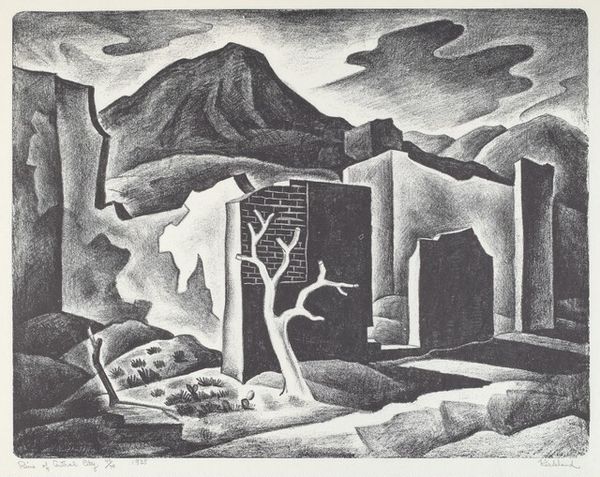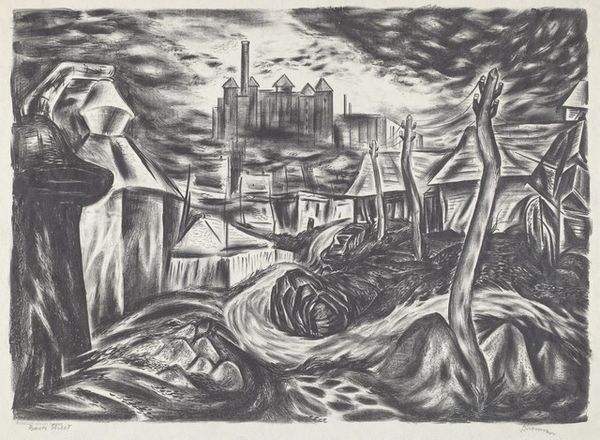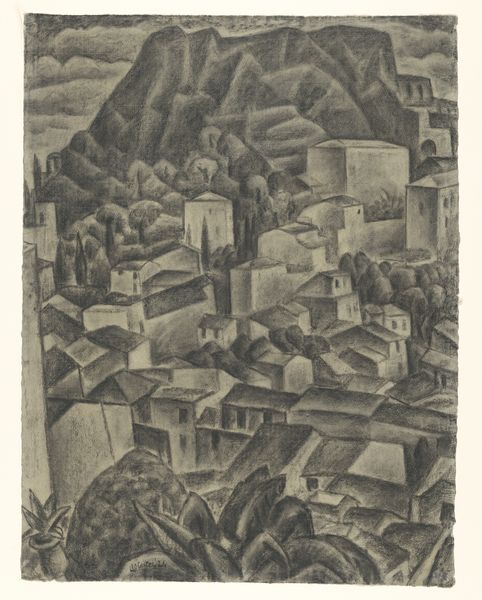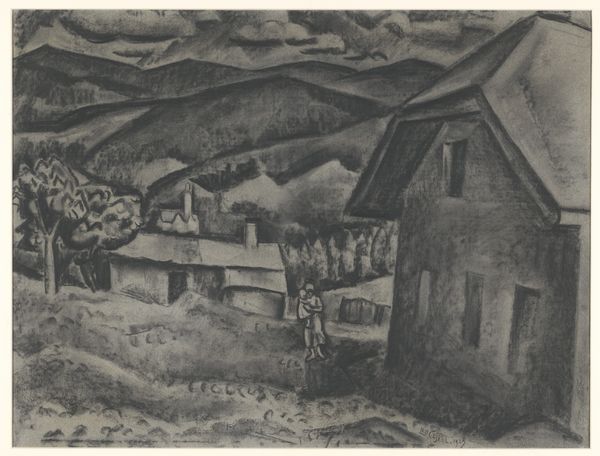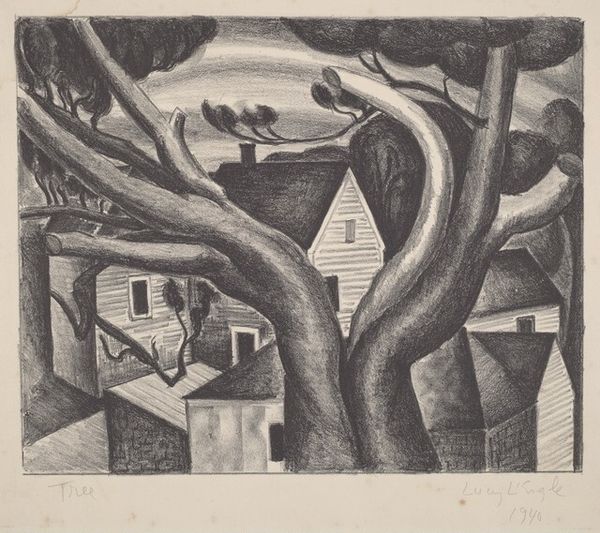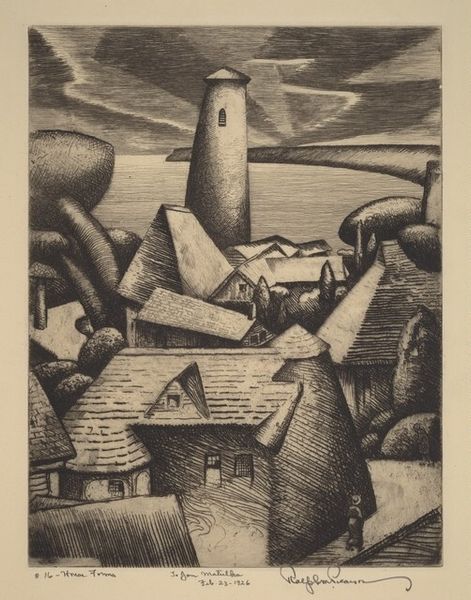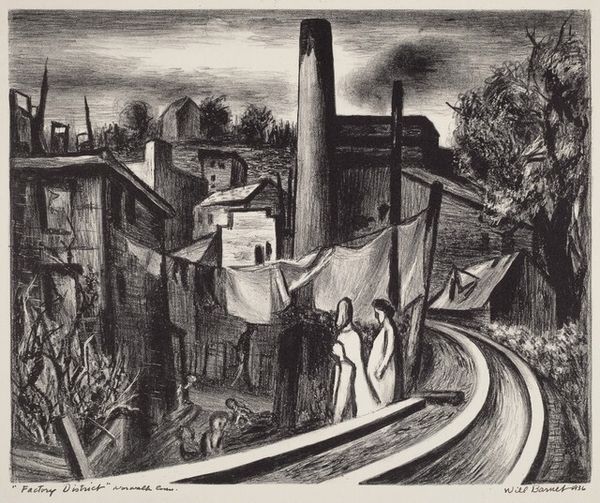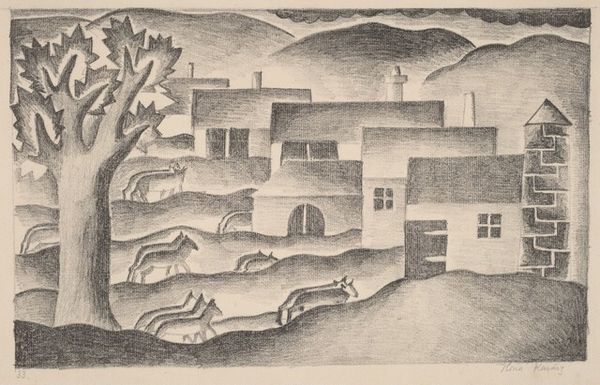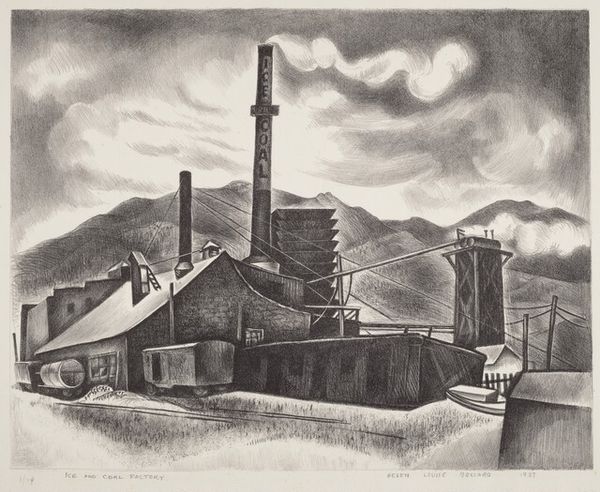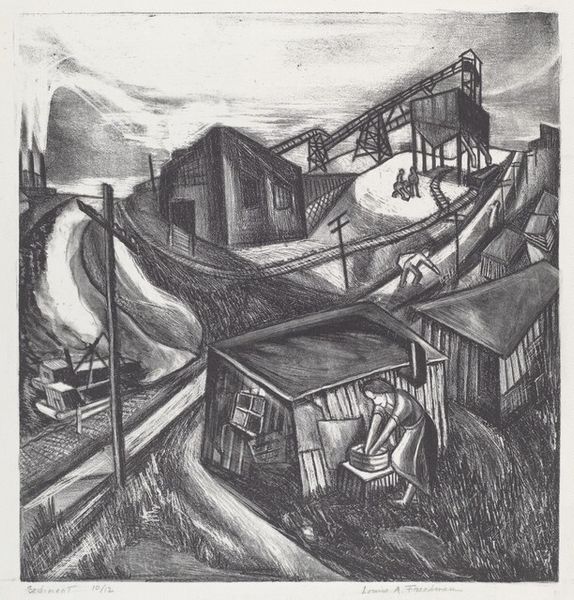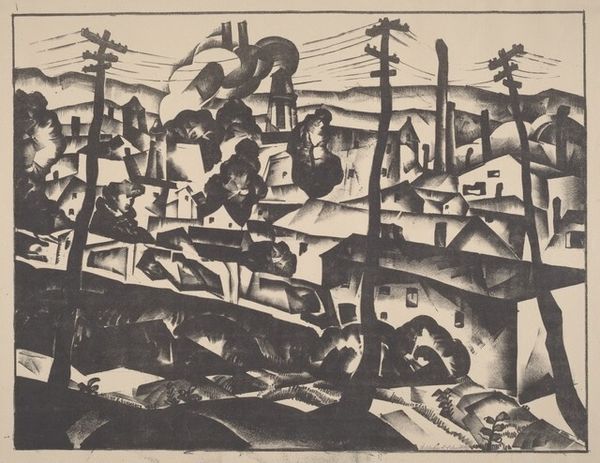
drawing, print, graphite, charcoal
#
drawing
# print
#
landscape
#
charcoal drawing
#
social-realism
#
surrealism
#
graphite
#
portrait drawing
#
charcoal
#
graphite
#
realism
Dimensions: image: 284 x 356 mm sheet: 390 x 454 mm
Copyright: National Gallery of Art: CC0 1.0
Editor: This is William J. Scott's "Untitled (Morning Delivery)," created in 1934 using charcoal and graphite. It gives me the sense of a small, hard-working, blue-collar community getting ready to start the day. What story do you see in this piece? Curator: It speaks to the powerful social realist movement taking hold at the time, right? The industrial subject matter, the depiction of labor... the aesthetic certainly points toward an interest in representing the working class, elevating them to the subject of fine art. Does it make you think about whose stories art institutions chose to showcase at the time? Editor: Absolutely. And considering it was made in 1934, during the Depression, it adds another layer, showing the struggles but also the resilience of these communities. The artist's focus on their daily grind emphasizes the dignity of hard work, even in times of economic hardship. Do you think it’s critical of the system or celebrating perseverance? Curator: Well, the absence of overt symbols of power is telling. The mine looms, but the figures are central, aren’t they? It is certainly focused on these individuals. Scott presents an environment defined by the necessities of industrial labor, framing the workers within it, for better or worse. The composition itself acts as a document and, perhaps, an endorsement of their struggles. Think about where this piece might have been displayed originally. Would it have been hung in corporate lobbies? Or would it likely have been in union halls or government-funded galleries created to support artists during the Depression? Editor: That is a really insightful point! It shifts my understanding to consider the intended audience and the socio-political context surrounding its display. I never thought of that, it is very helpful to consider. Curator: Right. The very act of representing these workers visually empowered them within the social discourse, didn’t it? Editor: Exactly, thanks for shining a light on the important connection between art and social history.
Comments
No comments
Be the first to comment and join the conversation on the ultimate creative platform.
